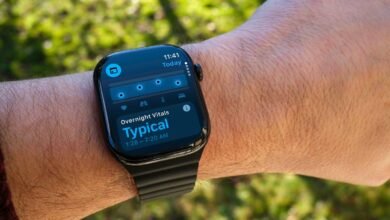Apple Watch Sheds Its Training Wheels with Stellar Battery Life

▼ Summary
– Apple Watch battery life has significantly improved, with Ultra 3 lasting multiple days and Series 11 performing nearly as well as Series 10.
– Recent tests show both Series 10 and 11 can last 28 hours with workouts and sleep tracking, a major gain from the original model’s 18-hour limit.
– Apple Watch requires being connected to a charger and having at least 50% battery to install software updates to prevent bricking the device.
– Modern Apple Watches like Ultra 3 can likely complete updates without running out of power if fully charged, but updates are designed for overnight charging.
– The author suggests removing the charger requirement for updates as a quality-of-life improvement, as it can be inconvenient despite the safety rationale.
The latest Apple Watch models are setting a new standard for battery longevity, moving far beyond the single-day expectations of the past. Both the Apple Watch Ultra 3 and the new Series 11 demonstrate that multi-day use is now a practical reality. Recent testing confirms the Series 10 and Series 11 can deliver up to 28 hours of operation on a single charge, even with demanding activities like an hour-long workout and overnight sleep tracking included. This marks a dramatic improvement over the earliest models, which often fell short of their 18-hour target.
Apple has managed this feat while packing in more advanced technology. Modern watches include power-intensive features like 5G connectivity and brilliantly lit always-on displays that show the seconds, all housed in a slimmer profile. The Ultra series takes endurance even further, allowing users to wear the device from Monday morning through to Thursday without needing a power source. This level of performance effectively removes battery anxiety for most people.
However, one legacy restriction remains in place. To install a software update, an Apple Watch must not only have a battery level above 50% but also be physically connected to its charger. This safety measure is designed to prevent the device from becoming unresponsive if it were to lose power during a critical installation process. Given the robust battery life of current models like the Ultra 3, it’s reasonable to believe a fully charged watch could easily complete an update to a new watchOS version without any risk of shutting down. The same logic applies to any modern Apple Watch that has more than half its charge remaining.
The ideal scenario is for software updates to be completely seamless, happening automatically overnight while the device is charging. In practice, many users find this process isn’t always smooth. It’s common to put on a freshly charged watch only to be greeted by a notification stating an update failed to install. The instinctive response is to navigate to Settings, find the Software Update section, and proceed with the installation.
At this point, users encounter the familiar roadblock. The Install button is available, but a message insists the update, perhaps a 312 MB file, cannot proceed without a connection to a charger. This creates a small but noticeable friction in the user experience. Eliminating this requirement for watches with a sufficiently high battery level would be a welcome software enhancement in a future watchOS release, naturally while still mandating a charger for low-battery situations.
(Source: 9to5 Mac)
